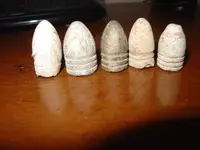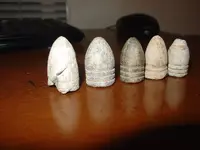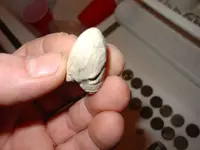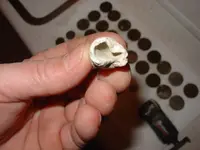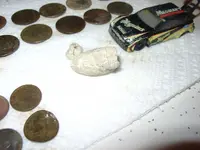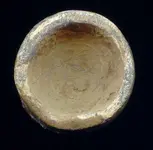hdmech71
Hero Member
Help ID'ing bullet
Found this bullet today and I am not sure what kind it could be. I have found three ringers before and some other style bullets but this one is a little different. I have one pic sizing it up to some of my others. The one on the left is the one in question. It is the size of the 69 three ringer but it only has two rings that I can tell. I am not used to finding to many bullets so please forgive my knowledge level. The bullet has plow damage but is still a good find for my area. Thanks for the help.
Found this bullet today and I am not sure what kind it could be. I have found three ringers before and some other style bullets but this one is a little different. I have one pic sizing it up to some of my others. The one on the left is the one in question. It is the size of the 69 three ringer but it only has two rings that I can tell. I am not used to finding to many bullets so please forgive my knowledge level. The bullet has plow damage but is still a good find for my area. Thanks for the help.



